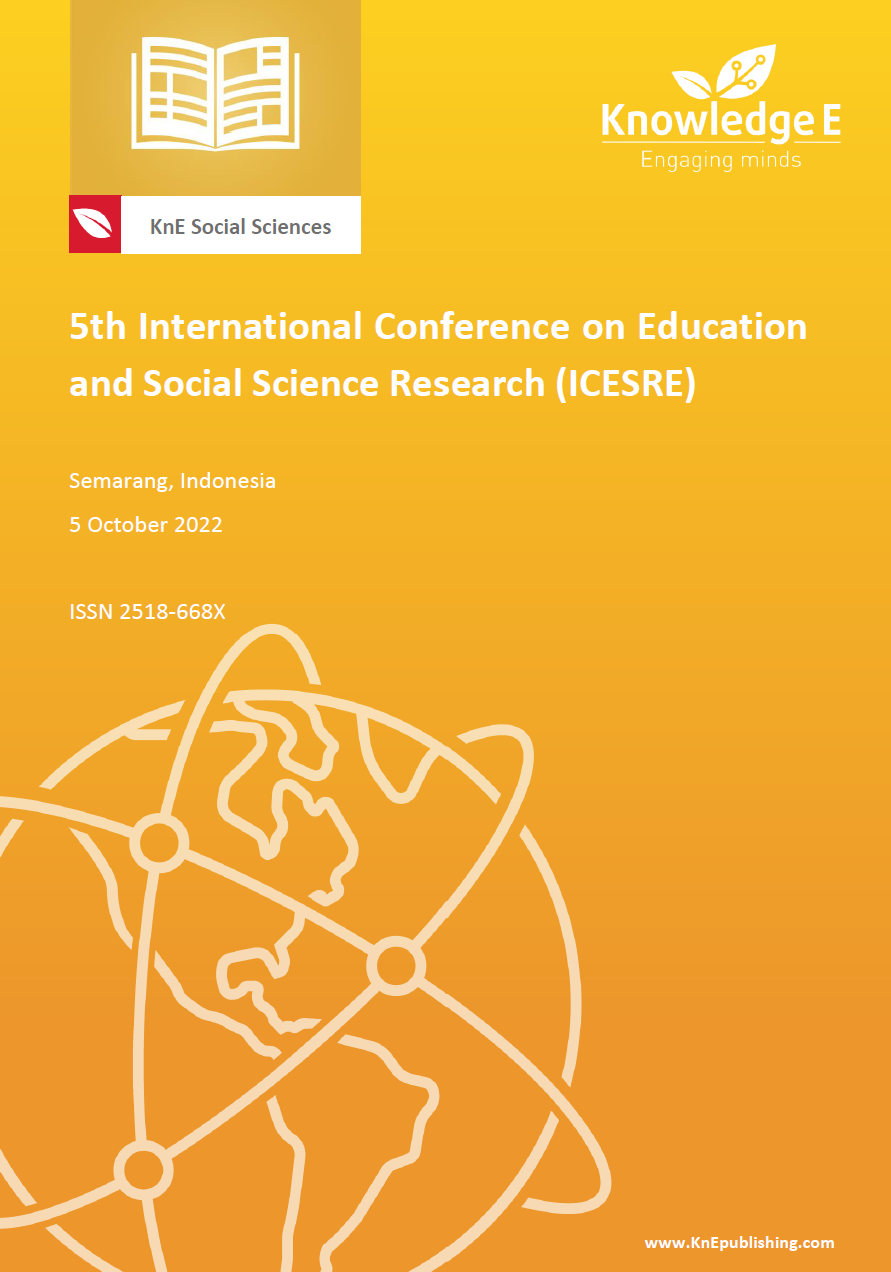Fossilization Analysis on Segmental and Suprasegmental Features of EFL Learners (Javanese-English): A Comparative Study
DOI:
https://doi.org/10.18502/kss.v7i19.12450Abstract
EFL learners ( Javanese-English) have the same background in that their mother tongue is Javanese. Although students of the English Education Study Program (hereafter PBI) have experienced English learning for years, their pronunciation remains suboptimal. The aims of the study were to compare the fossilization of the students majoring English Education Study Program and Javanese Education Study Program (hereafter PBSD) in Universitas PGRI Semarang, focusing on segmental and suprasegmental features and to describe their perception of fossilization. Descriptive qualitative methods were employed with percentages to show the comparison clearly. The data from 57 respondents were collected using a test of pronouncing academic vocabulary and a questionnaire. The vowels, diphthongs, and consonants were categorized as Segmental Features data, while the pitch and intensity of typical suprasegmental features were detected through a voice spectrogram software named PRAAT. The results showed that PBSD students have higher fossilization than PBI with the percentage of vowels (73.88% > 46.86%), diphthongs (73.71% > 42.55%), and consonants (87.86% > 39.87%). Meanwhile, EFL learners have typical segmental features in pitch and intensity, which are different from native speakers. The pitch of native speakers was 201.5 Hz, while PBI’s was 208.5 Hz and PBSD’s was 220.3 Hz. The results showed that the native speaker’s intensity obtained 74,35714286, while PBI’s was 66,35714286, and PBSD’s was 66,71428571. The results also showed that PBSD students had more difficulty with pronunciation. Therefore, it can be concluded that PBSD has a higher level of fossilization compared to PBI on segmental and suprasegmental features, even though they got the same mother tongue background since PBI students have been learning English for years and they have already familiar with the words. The findings of the current study will be proceeded by the researchers to design a concept of Javanese fossilization.
Keywords: fossilization; segmental; suprasegmental; EFL; Javanese-English
References
[2] Gilakjani AP. English pronunciation instruction: A Literature Review. International Journal of Research in English Education. 2016;1:1--6.
[3] Siqoyah S. Phonological interference of Javanese toward English pronunciation [Doctoral dissertation]. Indonesia: Universitas Islam Negeri Maulana Malik Ibrahim; 2020.
[4] Kemendikbud.go.id. Penguasaan Bahasa Asing, Kunci Unggul ASEAN dalam Kompetisi Global. Kemendikbud.go.id [Internet]. 2020 Dec. Available from: https://www.kemdikbud.go.id/main/blog/2020/12/penguasaan-bahasa-asingkunci- unggul-asean-dalam-kompetisi-global
[5] Senowarsito, Ardini SN. Phonological fossilization EFL learners: The interference of phonological and orthographic system of L1 javanese. 3L The Southeast Asian Journal of English Language Studies. 2019;25:74--85.
[6] Ardini SN, Wl MY, Ouwpoly NL. Error analysis of phonetic fossilization uttered by English department students University of PGRI Semarang. Lensa: Kajian Kebahasaan, Kesusastraan, dan Budaya. 2016;6:1--8.
[7] Ahmad YB. Teaching English pronunciation on suprasegmental on students of English education. SHS Web of Conference. 2018;42.
[8] Archvadze E. The problems of first language interference in the process of teaching second languages. English Education Journal. 2012;6:469--483.
[9] Corder SP. The significance of learner's errors. London: Longman;1967.
[10] Selinker L. 1972: Interlanguage. International Review of Applied Linguistics.10:209- -231.
[11] Kirkpatrick A. English as a lingua franca in ASEAN: A multilingual model. Hong Kong: Hong Kong University Press; 2010.
[12] Kayyis R, Sari UPI. The impact of Javanese language pronunciation error: How and why? ELT Lectura: Jurnal Pendidikan. 2017;4:60--69.
[13] Sahulata D. An introduction to sound and sound system of English. Jakarta: Departemen Pendidikan dan Kebudayaan; 1988.
[14] Creswell JW, Creswell JD. Research design: Qualitative, quantitative and mixed methods approaches. 5th ed. University of Nebraska: Lincoln; 2019.

